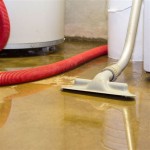What Would Cause a Basement Floor Drain to Back Up?
A basement floor drain serves a crucial role in preventing water accumulation and potential flooding in a home. Its primary function is to collect excess water from various sources, such as appliance leaks, burst pipes, groundwater seepage, and minor flooding events, directing it safely into the main sewer line or a designated drainage system. However, when a basement floor drain backs up, it can indicate a significant plumbing issue, potentially leading to unsanitary conditions, property damage, and costly repairs. Understanding the potential causes of this problem is essential for effective troubleshooting and prevention.
A backed-up basement floor drain manifests as water pooling around the drain opening, often accompanied by unpleasant odors. This situation can arise suddenly or develop gradually over time. The water may be clear, murky, or even contain sewage, depending on the source and the severity of the blockage. Identifying the underlying cause requires a systematic approach, considering factors ranging from simple clogs to more complex plumbing system failures.
Clogged Drain Line
One of the most common reasons for a basement floor drain backup is a clog within the drain line itself. Over time, debris such as hair, dirt, soap scum, lint, and small objects can accumulate inside the drainpipe, gradually restricting water flow. This buildup eventually forms a solid mass that effectively blocks the passage of water, leading to a backup. The location of the clog is a significant factor; a clog close to the drain opening will cause a more immediate and localized backup, while a clog further down the line might affect multiple drains or even the entire plumbing system.
The composition of the clog also influences its severity and difficulty to remove. Hair and grease, for example, tend to bind together, creating a particularly stubborn blockage. Similarly, mineral deposits from hard water can accumulate on the interior walls of the pipes, narrowing the passage and contributing to the formation of clogs. Regular maintenance, such as flushing the drain with hot water and baking soda or using a drain snake to remove debris, can help prevent clogs from forming and minimize the risk of backups.
Identifying a clogged drain as the culprit often involves observing the drainage pattern. If water drains slowly or not at all, and if plunging the drain doesn't resolve the issue, a clog is likely present. In more severe cases, gurgling sounds emanating from the drain might indicate trapped air struggling to escape past the blockage. While minor clogs can sometimes be addressed with DIY methods, more stubborn or deep-seated clogs may require professional plumbing assistance.
Sewer Line Blockage
A more serious cause of a basement floor drain backup is a blockage in the main sewer line. The sewer line is the primary drain pipe that collects wastewater from all the drains in a house, including toilets, sinks, showers, and floor drains, and carries it to the municipal sewer system or a private septic tank. When this line becomes blocked, wastewater cannot flow away from the house, causing it to back up into the lowest drain, which is often the basement floor drain.
Sewer line blockages can occur for various reasons. Tree roots are a common culprit, as they are attracted to the moisture and nutrients inside sewer pipes. Over time, roots can infiltrate the pipes through cracks or joints, growing and expanding until they completely block the line. Other causes include collapsed or damaged pipes due to age, corrosion, or ground shifting, as well as the improper disposal of items like grease, diapers, and feminine hygiene products down the toilet.
Unlike localized clogs in individual drain lines, a sewer line blockage typically affects multiple drains in the house. Warning signs include slow drainage in multiple fixtures, gurgling sounds coming from toilets or drains, and the presence of sewage odors emanating from drains or the yard. A sewer line backup is a plumbing emergency that requires immediate attention from a qualified plumber. Attempting to clear the blockage without the proper tools and expertise can worsen the problem and potentially damage the sewer line further.
Professional plumbers use specialized equipment such as sewer snakes and hydro jetters to diagnose and clear sewer line blockages. A sewer snake is a long, flexible cable with a cutting tool attached to the end, which can be inserted into the sewer line to break up and remove obstructions. A hydro jetter uses high-pressure water to blast away blockages and clean the interior of the pipes. In cases where the sewer line is damaged or collapsed, repair or replacement may be necessary. Regular sewer line inspections can help identify potential problems before they escalate into costly backups.
Sump Pump Failure
In homes with a high water table or a history of basement flooding, a sump pump is often installed to remove excess water that accumulates around the foundation. The sump pump sits in a pit, and when the water level reaches a certain point, the pump automatically activates, pumping the water away from the house and discharging it into a designated area, such as a storm drain or a nearby yard. If the sump pump fails, water can accumulate in the basement and eventually back up into the floor drain.
Sump pump failure can occur for several reasons. The pump motor may burn out due to age, overuse, or electrical problems. The float switch, which triggers the pump to turn on and off, may become stuck or malfunction. The discharge pipe may become clogged with debris or frozen during cold weather, preventing the pump from effectively removing water. Power outages can also render the sump pump inoperable unless a backup power source is in place.
Recognizing sump pump failure involves observing the water level in the sump pit. If the water level is consistently high or rising, even during dry weather, it suggests that the pump is not functioning properly. Other signs include the absence of the characteristic hum of the pump motor when water is present in the pit, and the presence of standing water around the basement floor drain. Regularly testing the sump pump by manually activating the float switch can help identify potential problems before a backup occurs.
Preventing sump pump failure involves regular maintenance, including cleaning the pump intake screen, inspecting the float switch, and ensuring that the discharge pipe is clear of obstructions. A backup sump pump, powered by a battery or generator, provides added protection in case of a power outage or primary pump failure. Proper grading around the foundation can help divert water away from the house, reducing the load on the sump pump and minimizing the risk of basement flooding.
Plumbing Vent Issues
Plumbing vents are an essential part of a home's drainage system, as they allow air to enter the pipes, preventing vacuums from forming and ensuring proper water flow. These vents typically extend through the roof and allow sewer gases to escape while maintaining atmospheric pressure within the plumbing system. If a plumbing vent becomes blocked or restricted, it can disrupt the drainage process and lead to backups in various fixtures, including the basement floor drain.
Vent blockages can occur due to various factors. Birds or rodents may build nests inside the vent pipe, obstructing airflow. Leaves, branches, or other debris can accumulate on the vent opening, creating a partial or complete blockage. In colder climates, ice can form inside the vent pipe, particularly during periods of freezing rain or snow, restricting airflow and causing backups.
Identifying a vent problem as the cause of a basement floor drain backup can be challenging, as the symptoms may resemble those of a clogged drain line or sewer line blockage. However, certain clues may point to a vent issue. Gurgling sounds coming from drains, especially when other fixtures are being used, can indicate trapped air struggling to escape due to restricted venting. Slow drainage in multiple fixtures, combined with the absence of a localized clog, may also suggest a vent problem. A strong sewer odor inside the house could also be a sign that the vent is blocked, preventing sewer gases from escaping properly.
Addressing a plumbing vent issue typically involves clearing the blockage or restriction. This may require accessing the roof to inspect and clean the vent opening. A garden hose or a plumbing snake can be used to dislodge debris. In cases where ice is the problem, pouring hot water down the vent can help melt the ice and restore airflow. Because working on a roof can be dangerous, it's often best to hire a qualified plumber to address vent issues safely and effectively. Regular inspection and maintenance of the plumbing vents can help prevent blockages and ensure proper drainage throughout the house.
Heavy Rainfall and Groundwater Infiltration
In areas with heavy rainfall or a high water table, excessive groundwater infiltration can overwhelm the drainage system and lead to basement floor drain backups. During periods of intense rain, the soil surrounding the foundation can become saturated, increasing the hydrostatic pressure against the basement walls and floor. This pressure can force water to seep through cracks, joints, or other imperfections in the foundation, overwhelming the sump pump (if present) and causing water to back up into the floor drain.
Groundwater infiltration can also occur in homes without a sump pump or with an ineffective drainage system. The water table, which is the upper level of groundwater in the soil, can fluctuate depending on rainfall, seasonal changes, and other factors. When the water table rises above the level of the basement floor, water can seep into the basement through the foundation, eventually accumulating and backing up into the floor drain.
Identifying heavy rainfall or groundwater infiltration as the cause of a basement floor drain backup often involves correlating the timing of the backup with periods of heavy rain or a rising water table. The presence of damp or wet spots on the basement walls or floor, along with a musty odor, can also indicate groundwater seepage. In some cases, homeowners may notice water stains on the walls or floor, indicating previous instances of water intrusion.
Preventing basement floor drain backups due to heavy rainfall and groundwater infiltration requires addressing the underlying causes of water intrusion. Improving drainage around the foundation by grading the yard away from the house, installing French drains, or extending downspouts away from the foundation can help divert water away from the basement. Sealing cracks and joints in the foundation with waterproof sealant can help prevent water from seeping through. Installing or upgrading a sump pump system can effectively remove water that does manage to enter the basement. In severe cases, professional waterproofing may be necessary to create a barrier against groundwater and prevent future backups.

Why Does My Floor Drain Back Up Structure Tech Home Inspections

Sewer Backup Basement Drain Flood Causes Cyclone Valves

Basement Drain Backing Up Here S What To Do Right Now Servicemaster

Why Did My Basement Floor Drain Back Up 1 Tom Plumber

Why Does My Floor Drain Back Up Structure Tech Home Inspections

Basement Drain Backing Up Here S What To Do Right Now Servicemaster

How To Fix Basement Floor Drain Backing Up Avalon Home Inspections

Why Is My Basement Drain Backing Up Edmonton Drainage Experts Peak Sewer Underground

Basement Drain Backing Up In Winter Top Causes Solutions

Why Is My Floor Drain Backing Up Code Blue Plumbing
Related Posts







